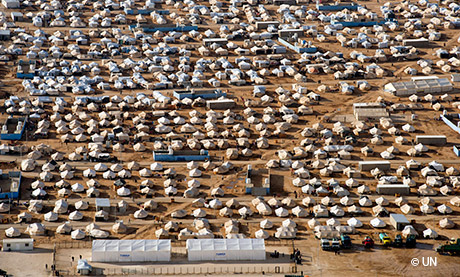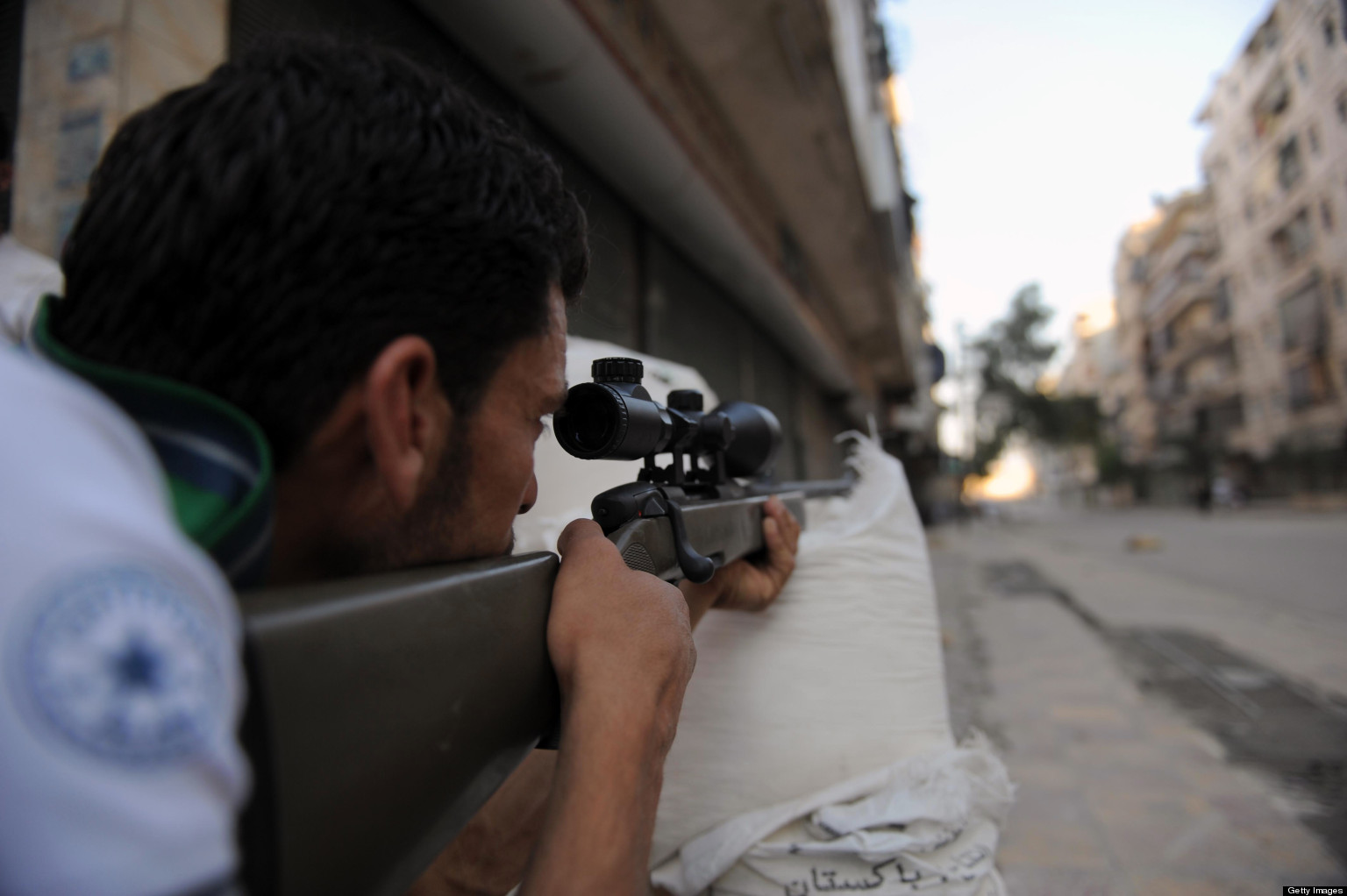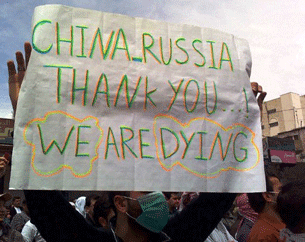On March 15 2013, the Syrian uprising entered its second year. It was a milestone that seemingly passed with a whimper, as today Syria is locked in a civil war, with a nuanced collection of rebel groups engaged in a fierce conflict with a draconian and increasingly desperate government.
Today, the Syrian conflict has cost the lives of nearly 100,000 people, and forced millions more from their homes. On March 6th 2013, the UN reported that the number of Syrian refugees had reached one million – a number reportedly swelling at a staggering rate. Violence has engulfed much of country, and it is widely believed that upwards of three million Syrians are internally displaced inside Syria. What has been dubbed ‘spillover’ has seen Syria’s conflict threaten the delicate regional balance of the Middle East. At this time, the conflict has no end in sight.
Working at Public Outreach Group (non-profit fundraising consultants for some of the world’s largest international aid, medical relief, child welfare and human rights organizations) my colleagues and I have come to see the crisis in Syria from a uniquely humanitarian perspective. This viewpoint does not rely simply on numbers and statistics to understand the human cost of this conflict for the people of Syria, and the region as a whole. The humanitarian crisis in Syria is a multi-faceted issue that involves a variety of different problems. International aid and relief organizations have recently reported on three specific areas of work where a considerable lack in necessary funding is causing aid workers to fail in their missions: adequately accounting for the ballooning refugee population, providing rehabilitation programs and educational resources for children affected by violence, and rebuilding Syria’s collapsing medical system.
This three part series will discuss the affects the considerable lack of funding is having on relief efforts for Syria’s refugee crisis, welfare of children, and the state of Syria’s medical system.
[captionpix align=”right” theme=”elegant” width=”320″ imgsrc=” http://www.iinanews.com/en/images/a%20jeru%20poverty.jpg ” captiontext=”Over one million Syrian’s have been forced from their homes, fleeing into neighboring Turkey, Lebanon, Jordan and Iraq, many forced to live in incredibly ill prepared refugee camps. Organizations such as the UNHCR have been playing essential roles in attempting to alleviate the worsening situations of many Syrian refugees.”]
Part 1: The Refugee Crisis – Delicate balances threatened…
As fighting has come to engulf much of Syria, the UN reported in February that an estimated 5000 people are fleeing Syria every single day. An exodus that has driven the number of refugees in Lebanon, Turkey, Iraq and other countries to over 1.3 million – with over four million now internally displaced inside Syria.
Syrian refugees have for months faced one of the coldest winters in over 20 years, coupled with a major lack in basic resources. Government red tape and a massive lack of funding for aid and relief efforts have caused considerable hardship for refugees. Refugees who fled Syria often leave with nothing more than the clothing on their backs and the money in their pockets. They have arrived with little means to support themselves, and are becoming entirely reliant on international aid. Refugee International has reported that in Turkey, Jordan and Iraq, refugee camps are at capacity and overcrowded, aid groups too underfunded to support so many, and refugees are being turned away, forced to seek shelter elsewhere. The consequences have ranged from outbreaks of disease, widespread malnourishment, illness due to cold weather/lack of adequate shelter, and a major lack of educational and medical resources. Organizations working with refugees, including the UNHCR, UNICEF and Médecins Sans Frontières, are struggling to provide even the basic necessities. This reality could spell disaster for these countries already struggling to support and accommodate such a massive influx of refugees, as many are predicting the number of refugees to triple by year’s end.
In Lebanon, the government has already been struggling for decades to accommodate the massive Palestinian refugee population that flooded the country in 1948 following the creation of Israel. Now Lebanon is absorbing more Syrian refugees than any other country, estimated at over 500,000. This is causing considerable worry, with many pointing to Lebanon’s long history of sectarian tension and conflict as recipe for further instability. Syrian refugees entering Lebanon are religiously and ethnically diverse, and some are warning this influx could cause an imbalance in Lebanon’s delicate sectarian equilibrium.
It is against the law to construct any formal refugee facilities for Syrians refugees, as the government fears it will encourage more to seek refuge in the already struggling state. MSF has reported, “Syrians who seek safety in Lebanon [are] not receiving anywhere near adequate levels of humanitarian assistance and are living in extremely precarious conditions.” Anne Barnard recently reported in the New York Times that the Syrian refugee crisis could become much worse, as the battle for Damascus hasn’t even begun. If the fighting in Syria reaches the streets of Damascus, a politically and religiously diverse city, only a half-hour drive from the Lebanese border, the refugee crisis in Lebanon could explode.
Aid organizations providing care and relief for Syrian refugees, including the UNHCR, UNICEF and MSF, are and will continue to play essential roles in both mediating the inflow of refugees into Syria’s neighbors and providing care for those refugees unable to support themselves. Despite this, aid agencies have warned they are receiving insufficient funding to effectively fulfill these roles, and many Syrian refugees are being left to fend for themselves. The UN recently illustrated in a report the true difficulty they and other aid providers face. “There is a widening gap between the needs of the people suffering the impact of the Syrian crisis and the resources available to support them and to support the host countries. There is no way to fill this gap if we only use the traditional, humanitarian aid budgets and other instruments of humanitarian support.”




